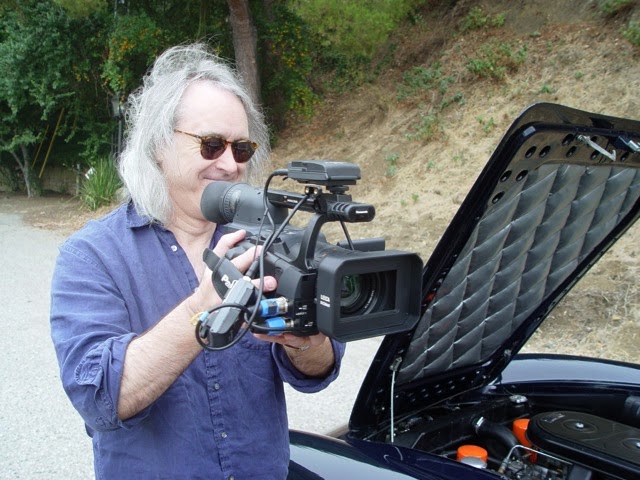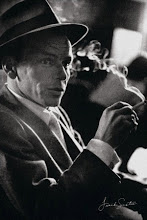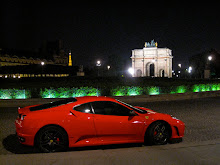
Working with Chad Glass on the execution of the Carrera Panamericana concept brought back memories of earlier collaborations with artists in producing posters for our projects. The repertory company was essentially a very independent, guerrilla-style film studio and one of my functions was to operate as 'Head of creative advertising' as the major studios would put it.
When I first opened the subject with Chad of working together, I told him that I wanted a bullfighting theme where the car is the bull. I felt the tradition and cultural resonance was ideal for the subject of our documentary. Chad's first rendering was more abstract than literal and captured my imagination. It set in motion a project to do a limited series of Chad's interpretation of the various elements seen in the documentary about which I won't say more at this time. However, we went with a literal representation for the official poster in the style of a traditional bullfight poster after Ron Kellogg expressed enthusiasm for the idea of a bullfighter holding a cape in front of a car. I am very happy with the result and the approval ratings have been through the roof.
Back in the day, having just made a police drama movie very much in the style of a current Michael Connelly novel, the task of creating a poster presented itself and I knew exactly what I wanted--a glossy black background accenting a shiny silver LAPD badge. I felt the visual would be potent and compelling. I wasn't particularly happy with the title Bleeder & Bates (Bleeder being a down & out prize fighter and Bates a homicide detective) which came about by default and I felt the tag line needed to do what the title ordinarily would--sell the concept. One of my favorite films during that time had been William Friedkin's To Live and Die in L.A. and I believed that fans of that film would like Bleeder. Hence the tag line 'A fast place to live. A Harder place to die' made its way onto the poster and packaging. Add photos of a couple of guys with guns and pretty girls along with a Porsche in Martini racing colors going flat-out on Mulholland Drive and the photo gallery was complete. Having authored the concept, I now needed a graphic artist.
The first artist who was referred to me wanted $10K to execute the poster. Why that amount?, I asked him. Because the chrome aspects of the badge are impossible to get right and they are very time consuming, he told me. And if we make the badge flat silver without the chrome, reflective highlights, how much would it cost? $10K, was his reply. Taking it a step further, I asked what the price would be if we did without the badge altogether. Guess what he said--$10K. Obviously he needed $10K and I sent him on his way that he might find it (somewhere else).
I found another artist who, for $1.5K, was able to translate my concept for Bleeder into a very nice visual presentation. I especially liked the way he compressed the letters in the title font giving it extra visual tension and I thought he did an excellent job on the badge. It was exactly what I had pictured in my mind's eye. The poster seemed to please all of us who had been involved with the production. Nice, but the real test was yet to come.
At the time I was wanting to experiment with video distribution and my organization undertook that task for Bleeder & Bates. About two months later, I began getting phone calls from video outlets around the country. They wanted to order more copies of Bleeder and to know if we had other films to offer them. According to several of the outlets, Bleeder was rented every night for the first sixty days that the product was in their stores. Were they doing special promotions? The answer was no--the poster art on the packaging with its striking badge and implied To Live and Die in L.A. reference was doing the job.
I don't think the subject of poster concept and art are much dealt with in film schools but I think it should be. Defining the poster is a great way to distill the essence of a film and convey its attractive elements to the public. I also think the mental image of what the poster will ultimately look like can be both inspiring and instructional for the filmmaker as he or she is making the movie.
























































No comments:
Post a Comment